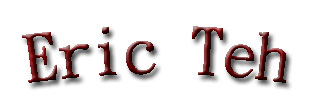JCAT USB Cable

Introduction
 JCAT (JPLAY Computer Audio Transport) is the hardware division of JPLAY, the company responsible for bringing you the well-known and highly regarded PC music player software of the same name.
JCAT (JPLAY Computer Audio Transport) is the hardware division of JPLAY, the company responsible for bringing you the well-known and highly regarded PC music player software of the same name.
At the time of writing, JCAT offers a number of products, namely a USB card, LAN cable, SATA cable and the product on test here – a USB cable.
Marcin Ostapowicz of JPLAY kindly offered to send me the JCAT USB cable for my evaluation and comments. After making all necessary arrangements, a compact cardboard box arrived at my doorstep by courier service. It took less than a week to arrive from Poland to Singapore !
Description
The JCAT USB cable really does look the part. The solid aluminium connectors are both the finest looking and finished USB connectors I have come across, and connect with a reassuringly firm and tight fit. The braided sleeve should provide a suitable degree of protection and ensure that the cable provides reliable and trouble free service. JCAT is quite open about the fact that this cable is actually produced by Paul Pang Audio, albeit to JCAT’s custom specifications.
According to official literature, the cable’s conductors are made out of silver plated copper conductors, arranged in a multi-core and multi-stranded fashion. Cable insulation is Teflon. Tight adherence to the official 90 ohm impedance standard for USB is claimed (which is not necessarily a given for audiophile USB cables).
I took the liberty to ask Marcin a few questions about the cable, and the exchange is set out below in verbatim,
Q: USB cables with physically separated power and data lines seem to be in vogue now. Any reason that the JCAT decides to go down the conventional path?
A : That’s because we were not happy with the results we were getting with dual-lead cable designs in the past. The design of JCAT USB sounded better to us. But you should know that we’re working on a dual-lead USB cable right now and possibly we will launch it later this year.
Q: It is interesting that JPLAY as a software company has come up with a USB cable. Do you have any insights as to why properly designed USB cables could sound different from one another ?
A: Frankly speaking and FYI we are not making this cable ourselves 🙂 But I worked very close with the manufacturer and tested many prototypes before final JCAT USB cable was developed. I knew that was it right away when I listened to this cable for the first time 🙂
Listening Tests
Considerable run-in is required for this cable to sound it’s best. I put in about 20 hours of music playback on it, and an additional 48 hours on the power lines of the cable (connected to a computer bus powered portable USB DAC, without any signal). Despite that, the cable continued to improve over the next 48 hours of usage. There you have it, cable burn-in and audiophile USB cables – enough to get the local lynch mob started.
For comparison purposes, I tried the JCAT in both my main and bedroom systems. The JCAT went head-to-head with my Wireworld Platinum Starlight cable in my main system. In the bedroom system, I also compared it with an iFi Gemini cable. Note that the JCAT is 1 m in length, while the Wireworld is 2 m, and the iFi, 1.5 m.
The JCAT in both setups was very close to neutral. I would say that the midrange had a hint of sweetness to it (this is subtle on the main setup, and more obvious on the bedroom setup). Otherwise, there was no undue exaggeration of any part of the frequency spectrum.
Bass articulation was a particularly strong point of the JCAT. Compared to the Wireworld, the JCAT had a leaner bass with less bloom. However, the JCAT exhibited tighter grip, faster speed and a greater level of detail. Double bass and low piano notes were not just heard, but there was a keen sense of the harmonics from the resonances of the instrument body and the decay of each note.
Vocals also had a glare-free clarity. Listeners who prefer their vocals thick and heavy may find the JCAT too lightweight, but I personally felt that an ideal balance between tonal density and clarity was struck.
String instruments like the guitar and violin had a clear incisiveness and leading edge to them. Percussion instruments were rendered with a good crisp tone and convincing decay.
Soundstaging and imaging were superb with the JCAT. Instrument placement was laid precisely, both laterally, and depth wise. Image sizes correspond naturally to the size of the instruments, which may disappoint those who prefer a larger than life presentation.
In comparison, the Wireworld had a fuller bass, and warmer balance (primarily through its solid bass foundation and smoother and more laidback midrange). It tended to portray larger image sizes too. The iFi was on the opposite end of the spectrum, with a faster sounding presentation that sounded a bit harsh and sibilant on the top-end.
The JCAT impressed me throughout my extended auditioning period with its transparency and truthfulness. Its tonal balance on invidual albums very much depended on the recording. Great recordings sounded great while bad recordings came through in all their honesty – warts and all. If you are looking for a straight-talking USB cable (if cables could talk), the JCAT is your candidate.
Conclusion
The JCAT is the cat’s meow ! I was very taken with it’s performance, as well as its excellent value. I highly recommend the JCAT.
Needless to say, I purchased the review sample.
The JCAT USB cable can be ordered directly from http://jplay.eu/jcat/
A 1 m length is priced at EUR 349 (EUR 299 for JPLAY customers), and worldwide shipping is a flat EUR 10. Longer cables are available upon request.
A big thank you also goes to Marcin Ostapowicz of JPLAY for making all necessary arrangements.


Eric also publishes his own blogspot out of Singapore entitled Eric’s Hifi Blogs (http://singaporehifi.blogspot.com/)
Stereo Times Masthead
Publisher/Founder
Clement Perry
Editor
Dave Thomas
Senior Editors
Frank Alles, Mike Girardi, Russell Lichter, Terry London, Moreno Mitchell, Paul Szabady, Bill Wells, Mike Wright, and Stephen Yan,
Current Contributors
David Abramson, Tim Barrall, Dave Allison, Ron Cook, Lewis Dardick, John Hoffman, Dan Secula, Don Shaulis, Greg Simmons, Eric Teh, Greg Voth, Richard Willie, Ed Van Winkle, and Rob Dockery
Site Management Clement Perry
Ad Designer: Martin Perry





Be the first to comment on: JCAT USB Cable